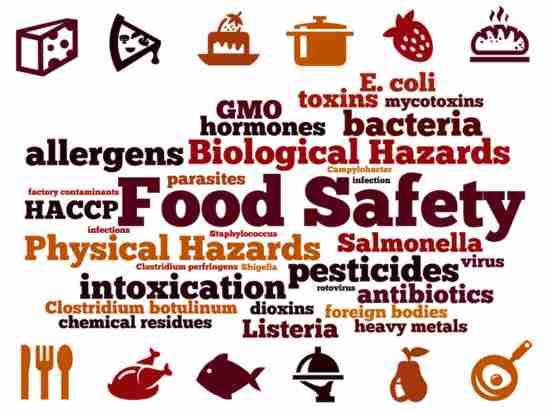The German Federal Institute for Risk Assessment discussed current trends and causes of foodborne outbreaks at a meeting this week.
Experts from scientific institutions, food regulatory authorities and businesses discussed zoonoses and food safety during a symposium at the Federal Institute for Risk Assessment (BfR) on Nov. 4 and 5.
The two-day event looked at zoonotic agents, their occurrence and transmission along the food chain, and other aspects of food safety. Presenters came from the BfR, Robert Koch-Institut, Animal and Plant Health Agency in the United Kingdom, and the Dutch National Institute for Public Health and the Environment (RIVM).
Foodborne pathogens and viruses
Campylobacter in raw milk, Salmonella in eggs or Listeria in ready-to-eat foods often cause outbreaks and the latter usually includes an above-average number of deaths, according to information presented at the meeting.
Campylobacter causes the most bacterial foodborne infections in Germany, with about 70,000 cases a year, especially in infants and young adults. Outbreaks in recent years have often involved school children who consumed raw milk on trips to a farm or from milk vending machines.
One of the largest outbreaks in 2018 was also discussed at the meeting. It included 191 cases in several federal states and was caused by Salmonella enteritidis complex type (CT) 1734. The probable vehicle of infection was barn eggs. Results of molecular typing of pathogen isolates were used to discover the association with 24 smaller outbreaks. Strategies to reduce Salmonella in pork were also discussed.
German officials are still investigating a Listeria outbreak identified last year by whole genome sequencing with 37 people involved from 12 states. Chilled sausages from Wilke Waldecker Fleisch- und Wurstwaren are the suspected source.
Viruses in food are also becoming more of a focus and the number of hepatitis E infections in humans has increased significantly in recent years, mainly caused by insufficiently cooked liver and raw sausages.
Attendees also heard about a hepatitis A outbreak last year affecting almost 40 people traced to dates from Morocco.
BfR has developed FoodChain-Lab, which is open-source software for trace-back and trace-forward analysis in foodborne disease outbreak investigations. Work was started during the outbreak of Shiga toxin-producing E. coli O104:H4 in Germany in 2011.
Bacillus cereus opinion
Meanwhile, the BfR has analyzed existing literature and its own research on bacterial strains from the Bacillus cereus group. This group includes 18 closely related species that are hard to distinguish from each other.
The agency found that it is likely each presumptive Bacillus cereus strain is able to form toxins, although the amounts vary. These toxins may cause gastrointestinal diseases. One type of disease is characterized by vomiting and the other is accompanied by diarrhea. Both can affect people of all ages, are not infectious and rarely last longer than 24 hours. It is very rare for them to become severe.
Between 2009 and 2015, two to six foodborne outbreaks per year caused by Bacillus cereus were reported by authorities in the German federal states.
The opinion provides information about health risks from bacteria in the Bacillus cereus group in foods and lists preventative measures, to provide official food monitoring authorities in Germany with a basis for assessing contaminated items.
Surviving forms of these bacteria, known as spores, can be transferred to food via soil particles or dust, and survive extreme conditions such as heat or dehydration for long periods. Initial contamination of food with spores is often very low. However, they can germinate as a result of improper storage, and bacteria can multiply in food.
Heat treatments, such as cooking or pasteurization, kill bacterial cells but individual spores survive and germinate. Fast and sufficient cooling to less than 7 degrees C (45 degrees F) and/or heat maintenance to more than 65 degrees C (149 degrees F) is necessary after meals have been treated with heat, to stop germination of spores and multiplication of bacteria.
Warm dishes and drinks containing milk should be kept heated at temperatures above 65 degrees C, or cooled to below 7 degrees C within a few hours. Leftovers of cooked dishes should be stored in the refrigerator and consumed within two to three days, according to the BfR.
(To sign up for a free subscription to Food Safety Website, click here.)

